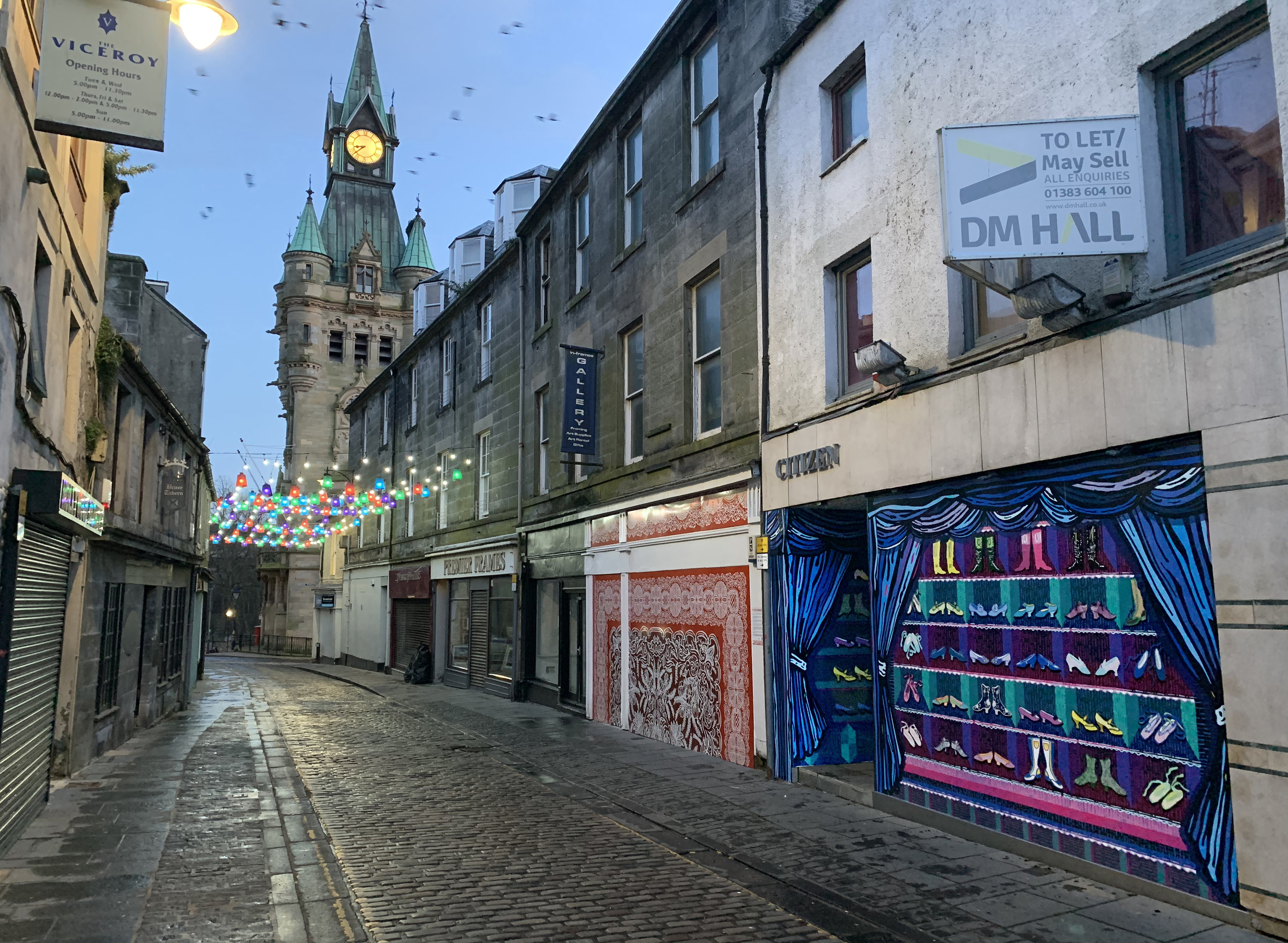Written in collaboration with Nicola Atkinson, Artist and Director of Beautiful Materials Design Studio, who has established a practice at the forefront of creative, placemaking, community engagement, and delivering artworks developed through genuine public participation. Beautiful Materials Design Studio is committed to delivering well-conceived and durable artworks that inspire and prompt actions, interactions, and reactions. https://beautifulmaterials.co/
There’s been a lot of talk about 20-minute neighbourhoods in the UK over the last couple of years. Although not a new concept within planning, there’s certainly a renewed political and societal focus on their development and potential benefits resulting from the Covid-19 pandemic.
In Scotland, 20-minute neighbourhoods feature as a concept in a number of recent national policies as a means of both supporting post-Covid recovery and reinventing our places for the future. They also serve Scotland’s emissions reduction target of becoming net-zero by 2045 by an anticipated reduction in the need to travel. Scotland’s fourth National Planning Framework Position Statement (published in November 2020) focuses on the four key areas of ‘a plan for net-zero emissions’, ‘a plan for resilient communities’, ‘a plan for a wellbeing economy’ and ‘a plan for better, greener places’. It’s clear to see how this concept and progressive transport planning and urban design might be the enabler to all of these aims.
From examples around the world, we know that 20-minute neighbourhoods work. Being tried and tested from Portland, Oregon, to Paris, community feedback from pilot programmes has demonstrated what can be achieved with a set of (relatively) straightforward interventions. A pilot programme in Melbourne Australia, which started in 2018, collated a number of community ideas to form a starting point for a local approach, which can be further replicated across the city. Areas for investigation reflected through the initial pilot included recommendations for improving cycling and pedestrian crossings of railway lines; enhancing connectivity of existing facilities through improved walking and cycling paths; reviewing bus service routes and frequency; supporting safe walk-to-school programmes; supporting community public art programmes and installations to reflect cultural heritage; and delivering streetscape improvements to revitalise local centres. Closer to home, but similar to the Melbourne approach, the emerging Edinburgh City Plan 2030 has already identified eight town centres as starting points.
Scotland has the opportunity to be a global leader in delivering this concept across the country, incorporating lessons learned from other countries and showing that it is feasible in both urban and rural locations. We also have the opportunity to showcase and reflect our rich cultural heritage within our design of 20-mintue neighbourhoods which could be incorporated through public works of art/design and tailored to suit each town or city. As Glasgow City Council states in its Heritage Assets Plan 2019-2019: “The importance of heritage cannot be overstated; it contributes substantially to prosperity, health, education and civic pride through providing evidence of our collective shared past, a high-quality urban environment and a unique identity for a place. It also sustains neighbourhoods as attractive places in which people wish to live, work and play.”
There is, without doubt, a major opportunity for Scotland to use 20-minute neighbourhoods to improve societal interconnectivity, reduce social isolation, improve health and wellbeing, improve levels of activity and regenerate areas of decline. So great is the opportunity that in its Programme for Scotland, published last September, the Scottish Government commits itself to work with local government to take forward its ambitions for 20-minute neighbourhoods where people can live, work and learn in communities close to home, as well as promising over £500 million over five years for large scale, transformational active travel infrastructure projects and introducing Low Emissions Zones in Scotland’s major cities in the first half of 2022. This commitment is also carried through to the draft Infrastructure Investment Plan for Scotland 2021-22 to 2025-26 which identifies three core strategic themes to guide investment; enabling the transition to net zero emissions and environmental sustainability, driving inclusive economic growth, and building resilient and sustainable places.
Designed as places where residents can meet the vast majority of their day-to-day needs within a 20-minute walk from their home, they are considered enablers for many of the objectives our transport strategies seek to achieve, such as improved health and wellbeing, increased active travel, sustainable and inclusive transport, and air quality improvements. But future 20-minute neighbourhoods must also be designed in a manner that nurtures strong local communities characterised by trust and people working together to create a liveable place. Creating a sense of community is an important identity-creating factor for people and the design of such a neighbourhood should inspire inhabitants to have a sense of pride in their community.
Nicola Atkinson, artist and director of Beautiful Materials Design Studio, says “With this understanding artists should be involved throughout the process, working in cooperation with the project leaders and the community to create thoughtful, imaginative and attractive places where the environment supports a high quality of life and sharing the hierarchy of ideas. Art & Design is an essential part of this and is fundamental to the success of the identity and sense of community in any neighbourhood. Art brings imagination, creativity, expertise and inspiration to the everyday. Creating an artistic landmark by using locally sourced materials or just excellent design will provide long-lasting pieces of public art which would be of benefit to the community and its sense of place.”
One such example, shown below, is the Damask & Red Shoes public artwork on Bruce Street in Dunfermline, created by Nicola. The public art installations have improved the look and feel of the street, as well as reflecting local history and encouraging more people to visit the area by foot and bike. Bruce Street is a partnership between Sustrans Scotland, Fife Council and local partners Delivering Dunfermline and Dunfermline Heritage Partnership.

Public Artwork Damask & Red Shoes. Photo Credit: ©Jim Payne
Strengthening the concept of 20-minute neighbourhoods using art and design will help to build social capital as people select communities to live in based on many parameters including attractive urban qualities, pleasant atmospheres and good social infrastructure.
In conclusion, as well as fulfilling policy ambitions, 20-minute neighbourhoods in Scotland should be designed as a place you want to return to; a space you love and want to maintain. Working together with communities to create these spaces in a collaborative approach to enhance community cohesion, inclusivity, safety, resilience recognising the importance of creativity, culture and the arts to our collective identity and future places.
The focus is on creating places for people, through strategies that make the best use of available land; encouraging the use of inclusive and equitable public and active transport; and supporting the resilience of urban spaces though innovative approaches such as micro-mobility and urban logistics. We’re excited to see how the 20-minute neighbourhood concept will provide answers to many of Scotland’s pressing issues.

